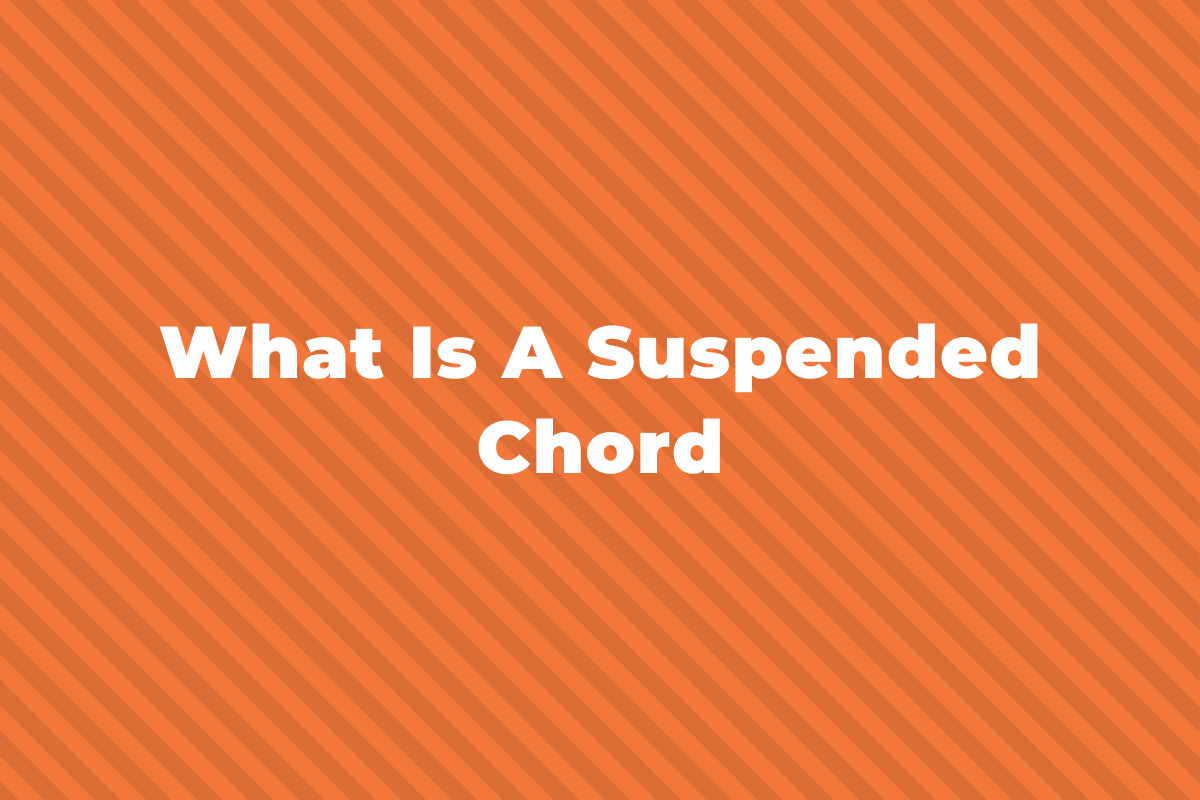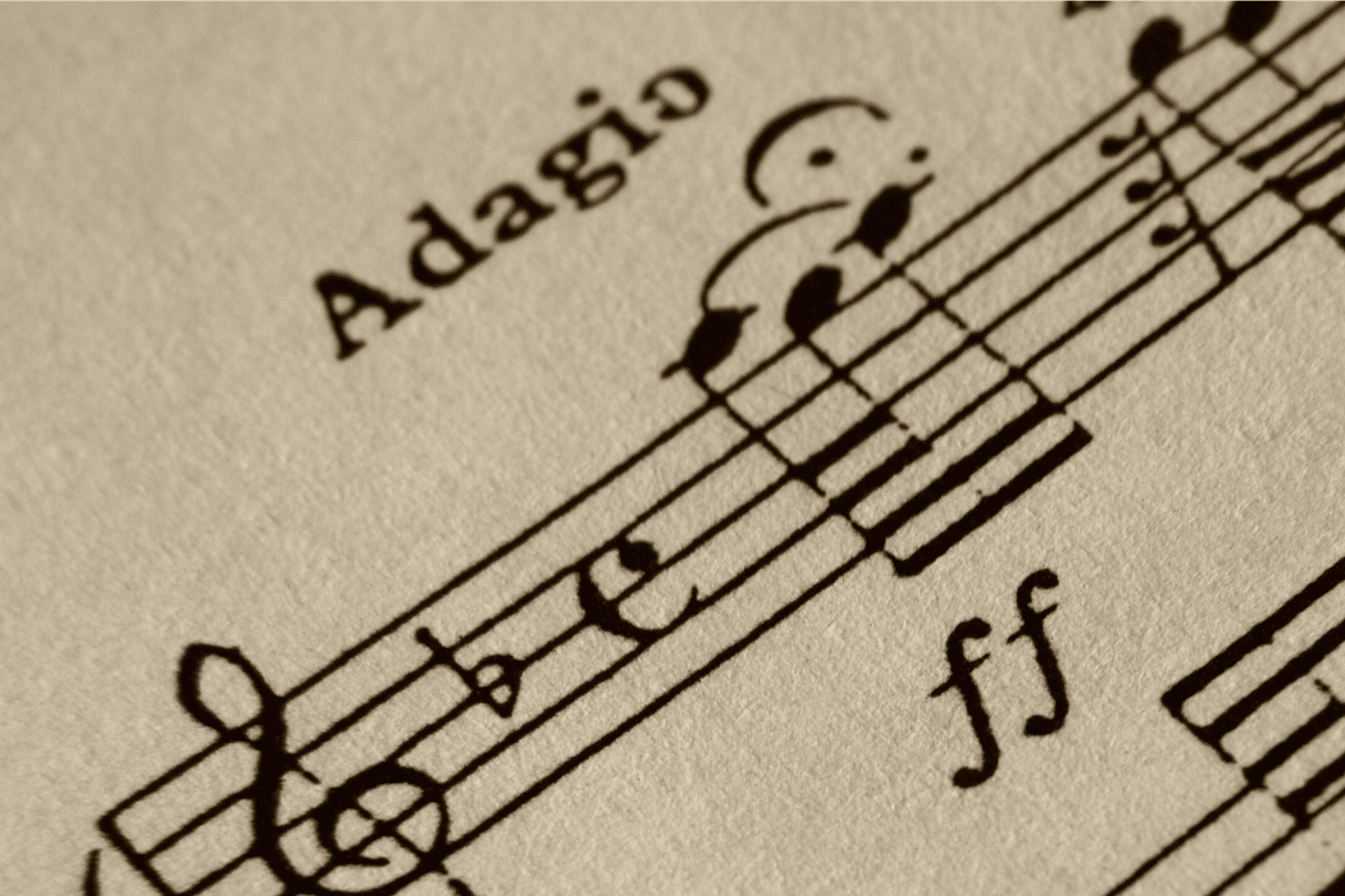Polyphonic texture or contrapuntal texture is what you get when independent melody lines combine to form music. Music in polyphonic texture may be vocal, instrumental, or a mix of both; however, the important point to remember is that in polyphonic music, the horizontal aspect of the melodies is stressed. These melody lines also make vertical sense, that is, they are harmonically pleasing.
Polyphonic texture can be contrasted with monophonic texture, where there is only one voice, and homophonic texture, where there is one leading voice and others that provide harmony notes (the vertical aspect is stressed here).
To help you grasp and fully understand what it is, in this blog post we’re going to take a look at 12 examples of songs with polyphonic texture. Let’s start by going back 1000 years with some gregorian chant.
1. Winchester Troper, Verset: Pascha Nostrum – Unknown
The Winchester Troper provides a window of insight into music in the Winchester Cathedral in the 10th and 11th centuries.
It is said to be authored by the cantor of the cathedral, and importantly, it contains the largest collection of 11th-century polyphony ever discovered.
The type of polyphony it contains is called “organum” and is a type of gregorian chant. Organum began with singers singing a “drone” below a chant melody.
It developed into “parallel organum,” where the second voice sings in fifths or fourths below the pre-existing chant. By the time of the Winchester Troper you have oblique motion as well.
The 174 organum pieces in Corpus 473 of the Winchester Proper contain the organal voice only.
The principal voice or “cactus firmus” would have been sung from memory or from another manuscript.
2. Sederunt Principes, Pérotin
The art of composing organa would grow in the 12th and 13th centuries in the Notre Dame school under the influence of Léonin and Pérotin. Now, third and fourth voice parts enhance the pre-existing chant melody.
Sederunt Principes by Pérotin is an example of organa quadruplum, as it is written for four voice parts.
What is interesting is that the chant melody, sung by the tenor, is itself altered.
Pérotin stretches it out in time (augmentation), and this allows for more elaborate voices to be sung over it.
Being stretched out, the tenor voice ends up producing a drone effect.
3. Sicut Cervus, G.P. Palestrina
By the time of Giovanni Pierluigi da Palestrina in the 16th century, the art of writing counterpoint has developed to an excellent degree.
Great renaissance composers like Guillaume Du Fay and Josquin des Prez have made lasting contributions, and Palestrina’s music is representative of European polyphony perfected in the Renaissance era.
In Sicut Cervus Palestrina sets out with a simple cactus firmus sung by the tenor. The other voices join one by one, imitating and the deviating.
“Imitative” polyphony will, in fact, be a hallmark of this piece.
There is room for word-painting too, for instance, the word “aquarum” is set to a “flowing” melody.
The motet’s overall effect is impressive and grandiose. Yet, the words are intelligible, and this despite the rhythmic complexity and independence of the voices.
4. Sumer is icumen in, Reading Abbey
This song dates back to the middle of the 13th century and was discovered on a manuscript at Reading Abbey, England.
Its composer may be W. de Wycombe but it’s not known for sure. It is called the Reading Rota; “rota” being another term for the word “round.”
A round is a type of canon, in which every voice follows the first. So, yes, every canon and every round — even simple ones like Frère Jacques — has a polyphonic texture to it.
Sumer is icumen in, or “summer has come in” is written for six voices.
Two voices sing fixed bass melodies that repeat through the piece, while the upper four voices sing in rounds.
5. Fugue in G minor, BWV 578, J.S. Bach
Like canons and rounds, fugues are polyphonic in texture.
Fugues are based on imitative counterpoint and flourished in the Baroque era (17th-18th century).
In a fugue, many imitative parts sound at once as a harmonic whole.
J.S. Bach is widely regarded as the preeminent composer of fugues, and his compositions display a staggering amount of variety and depth.
In BWV 578 the subject or main theme begins in the soprano line and is then imitated by the alto, tenor, and bass voices.
As each voice enters with the melodic material provided by the theme, the others continue in counterpoint.
6. Once in Royal David’s City, Kings College Choir & Sir Stephen Cleobury
Hymns are generally homophonic in texture: you have a main melody sung by the sopranos, and the other voices supplying harmony notes.
However, composers occasionally write a counter-melody above the soprano part for even greater variety.
Because the human ear likes to pick out the highest voice, you tend to hear the new tune sung by the “descant” part.
However, because you are also familiar with the original tune, you hear that as well within the harmony.
Can you hear the original hymn tune beneath this marvellous descant written by Sir Stephen Cleobury?
For more examples of homophonic texture check out our post here.
7. When The Saints Go Marching In, The New Orleans Jazz Band
In the early 20th century, the “Dixieland” style of Jazz emerged out of a blend of several music styles including blues, ragtime, and band marches.
The frontline instruments, generally the trumpet, clarinet, and trombone, improvise melodies simultaneously imprinting on the music a rich polyphonic texture.
In the video, right from the get-go, you’ll hear the trumpet with a clear melody, the clarinet improvising freely, and the trombone providing key chord notes while also venturing into a melody of its own.
8. The Lion Sleeps Tonight, The Lion King
This fun song is in 2-part polyphony. You have the “wimoweh” bass which starts the song and later serves as the harmonic basis for the melody that contains the English lyrics.
The English texts were penned by George David Weiss, while the song was originally composed as “Mbube” in Zulu by Solomon Linda.
The lion sleeps tonight has been recorded by various artists. Here, Pumbaa takes “a-weema-weh” while Timon sings the English texts.
9. Recuerdos de la Alhambra, Francisco Tárrega
Like keyboard instruments, the guitar supports music that has a polyphonic texture. This is especially true for fingerstyle and classical guitar.
Consider Recuerdos de la Alhambra by Francisco Tárrega, for instance.
The masterpiece can essentially be broken down into an arpeggiated voice upon which a tremolo part is superimposed.
The arpeggio has a melody of its own and lies in a lower register, while the tremolo rings above with a complimentary melody.
Watch this magical rendition by Brandon Acker.
10. Scarborough fair, Simon & Garfunkel
Plenty of musicians like Mark Knopfler and John Mayer use the guitar as an independent voice that compliments their lead vocal part.
Simon & Garfunkel’s arrangement of Scarborough fair starts in this fashion.
Once the main voice enters you have a polyphonic texture.
However, Simon & Garfunkel add a bit more “spice” by adding another independent voice from verse two onwards, thus adding further depth to the polyphonic texture.
11. Yelli, Baka Women
Independent of the European tradition, polyphonic music exists in cultures around the world.
For instance, the Baka, nomadic people of Cameroon and Gabon, create a polyphonic texture while yodelling, a singing technique in which you alternate the normal voice with a falsetto voice.
“Yelli” is a morning song sung by the Baka women to ensure luck in hunting.
Their voices, one may say, recreate the sound of the rainforests they dwell in.
Another tradition you may want to look up is the iso-polyphonic music of the Albanian people.
12. Baba Yetu, Christopher Tin & André van der Merwe
Mixing African and European traditions, this edition of Baba Yetu (Our Father) is as exciting as it is musically rich.
Diverging after the opening the chord, the male and female sections sing counter voices, creating a polyphonic texture.
Often the women’s section sings a drone-like part that hovers over the male voice.
The piece gets more interesting with the introduction of two soloists who enter with recitative parts which enhance the polyphonic texture.
13. Bonus: The Earliest Known Polyphonic Piece Written
Credit for this piece goes to Giovanni Varelli, then a PhD student at St. John’s College, University of Cambridge, and the British Library, the place where he discovered this gem.
It bears an early form of music notation, one that predates the 4- and 5-lined staves.
The unnamed piece dates, according to Varelli’s research, back to 900 AD in North-west Germany.
It comprises two vocal chant lines and is an example of early “organum,” as the second voice sang as an accompaniment.
At this point, it is worth noting that the line between homophonic texture and polyphonic texture can often get blurry.
Here, for instance, one may say that the piece is essentially homophonic.
Yet, the piece has only two lines, and these enjoy a fair degree of independence, deviating into consonances and merging into unisons, all while permitting the occasional dissonance.
Ending on a Single Note!
We hope you enjoyed this list of ancient and contemporary music that showcases a polyphonic texture.
As you listen to music you love, you’re now likely to hear a mix of polyphony and homophony blended in various degrees!



